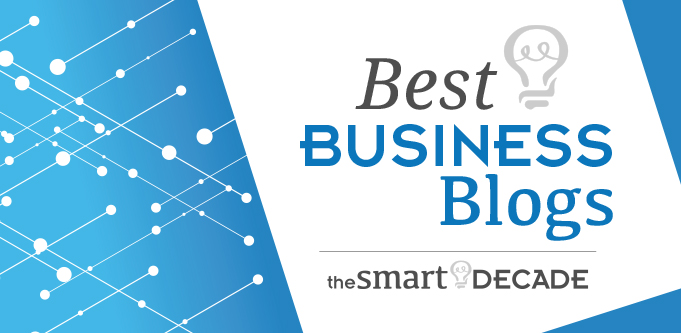Agentic commerce – what path will you take?
Agentic Commerce Is Here: What Amazon vs Shopify Means for Your Store (and Your GA4)
Lately there’s been a lot of chatter about agentic commerce—and for good reason. A public spat has emerged around whether third-party AI shopping agents can access and transact on major marketplaces. Meanwhile, brands quietly report eye-popping conversion rates from ChatGPT referrals. Here’s what’s really happening, why it matters, and how to prepare your store.
What is agentic commerce?
Agentic commerce is shopping done by an AI agent on behalf of the shopper. Instead of a human clicking around, an agent:
- understands the shopper’s intent and constraints,
- compares options across sites,
- adds items to cart,
- and can even complete checkout.
We’ve already seen agentic experiences in action with tools like Atlas and agentic browsers (notably Perplexity’s Comet). In demonstrations, agents have searched, selected, and placed items in cart without the shopper touching a traditional search results page.
Analysts peg the opportunity in the trillions—forecasting around $5T by 2030—because the “where to buy” decision shifts from search engines and ad feeds to the buyer’s chosen AI assistant.
Amazon vs Shopify: Walled gardens vs open rails
Here’s the tension. Amazon is challenging whether external agents (e.g., Comet’s) are authorised to access and use its data for shopping, arguing those bots aren’t part of its ecosystem. If agents do the buying, they can bypass Amazon’s in-platform ads—undermining a multi-billion-dollar pillar of its business.
Perplexity, for its part, argues that a Comet agent represents the shopper, essentially acting as the user’s delegate.
Shopify, by contrast, is leaning into agentic commerce—positioning itself as the open rail of the web. The result: a two-track internet for shopping—
- Walled gardens (tight control; ads-first),
- Open rails (merchant-first; agent-friendly).
For users and merchants, that difference is massive. If a platform blocks agents, shoppers who prefer agentic buying may drift toward agent-friendly storefronts and ecosystems over time.
The bot surge: what it is—and isn’t
Yes, there’s a rise in bot traffic. Some is benign (indexing, LLM crawlers), some is scraping (competitive intelligence, pricing). That’s not the main story here. The story is agent-driven traffic that leads to real revenue—and where it shows up in analytics.
Right now, the clearest signal for agentic commerce in GA4 is source / medium = chat.openai.com / referral (i.e., ChatGPT). Many stores aren’t seeing Perplexity/Comet yet as a distinct source, but they are seeing ChatGPT—and in some cases it’s a top revenue driver.
Real numbers: ChatGPT referral traffic can convert like crazy
Across multiple accounts, ChatGPT referral traffic has emerged as a serious performer—sometimes rivalling (even surpassing) organic revenue on a last-click basis, despite representing a small slice of traffic (often ~1%).
One pet category store posted an eCommerce conversion rate of 17% from ChatGPT referrals. That’s extraordinary. Compare that with Meta traffic under 1% in the same period.
Important nuance: don’t judge Meta solely by last-click GA4; Meta is a powerful awareness channel, and drives assisted conversions you won’t always see in a last-click view. Still, when last-click revenue from ChatGPT surpasses paid Meta for some merchants (as seen with a parts supplier), it’s a signal: agentic paths are already monetising.
Should you “optimise for two customers”—humans and bots?
Short answer: No. Optimise for the human shopper—but ensure their agent representative can quickly validate decisions. Think of the agent as a power-user version of your best customer:
- It needs clean, complete, structured information.
- It needs unambiguous proof points.
- It needs frictionless steps to add-to-cart and checkout.
This is not a departure from good UX and SEO—it’s a doubling down on both.
Practical actions to become agent-ready
- Strengthen product understanding (for agents and humans alike).
- Comprehensive product content: specs, dimensions, materials, compatibility, allergens, care, warranties.
- Trust elements: reviews, ratings, guarantees, returns policy, shipping cut-offs, stock status.
- Clear pricing and offers: tiered pricing, bundles, subscriptions, loyalty benefits.
- Give agents “fast answers” on every PDP.
- FAQs per product (not just a generic store FAQ): answer top questions agents and buyers ask before purchase (fitment, sizing, use-cases, alternatives).
- Comparison blocks: short, structured tables that contrast SKUs (agents love clarity; humans love speed).
- Tighten your information architecture.
- Logical category hierarchies, clean URL patterns, descriptive internal anchors, and “related items” that actually relate.
- Expand structured data (Product, Offer, FAQ, Review, Breadcrumbs). Schema markup is now table stakes for agentic interpretation.
- Reduce decision friction.
- High-quality imagery (multiple angles), short product videos, and if appropriate, 3D spins.
- Obvious CTAs, crisp shipping/returns messaging above the fold, low-friction cart and checkout.
- Brand matters more than ever.
Agents factor reputation signals. Keep your brand consistent across your domain, marketplace listings, social profiles, and support content. Consistency reduces agent uncertainty—and accelerates recommendations. - Choose your platform stance.
- If you sell on marketplaces, understand their position on agents; it may impact future exposure.
- If you run your own storefront (e.g., Shopify), you’re on the “open rails” side—lean into it with agent-friendly content and infrastructure.
Measurement: what you can (and can’t) track today
This is still evolving. A few practical checks:
- Watch ChatGPT in GA4.
Go to Reports → Acquisition → Traffic acquisition and segment source / medium for ChatGPT. Track conversion rate, AOV, and revenue trends over time. - Inspect Direct spikes.
Persistent, anomalously high Direct sessions may indicate scrapers or automated comparisons. Pair this with server logs or a bot management layer to differentiate the good from the bad. - Attribution windows and assisted conversions.
Keep a Model Comparison view handy in GA4 (last click vs data-driven) to understand Meta’s assist role while still acknowledging the strong last-click performance from ChatGPT. - Tag and test new surfaces.
If you trial agent-specific experiences (e.g., deep-link cart APIs, conversational checkout), ensure events are tagged consistently so you can read outcomes cleanly.
The honest truth: we don’t have perfect tracking for agents yet. Standards will emerge (and Chrome already ships an agent in the US for AI mode inside the browser). Expect the measurement picture to mature quickly.
The near future: Chrome joins the party
Don’t be surprised as browsers bundle agents natively. With Chrome enabling agent features in AI mode (rolling out in the US), expect agentic discovery and checkout patterns to grow—and for your storefront readiness to matter even more.
Quick checklist to run this week
- Audit PDPs: add product-specific FAQs, comparisons, and structured data.
- Validate trust signals: reviews, “why us,” returns/ship clarity above the fold.
- Surface compatibility and use-cases in bullets (not buried in prose).
- Check GA4’s chat.openai.com / referral performance (conv. rate & revenue).
- Investigate unusual Direct surges; consider bot controls for scrapers, not helpers.
- Map your marketplace vs storefront exposure and decide where to invest for agent-readiness.
Bottom line
Agentic commerce is no longer theoretical. It’s quietly driving real conversions today—sometimes at astonishing rates. You don’t need to “optimise for bots.” You need to make it trivially easy for an agent to confirm what a savvy human needs to buy with confidence. That’s great UX, fortified with structured clarity and brand trust.
Have questions? Drop them in the comments—happy to help. And if you’d like a hands-on review of your PDPs for agent readiness, get in touch with me at [email protected] and we’ll walk you through a prioritised action plan.

Jim’s been here for a while, you know who he is.


